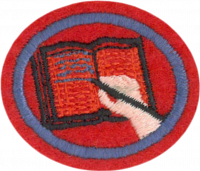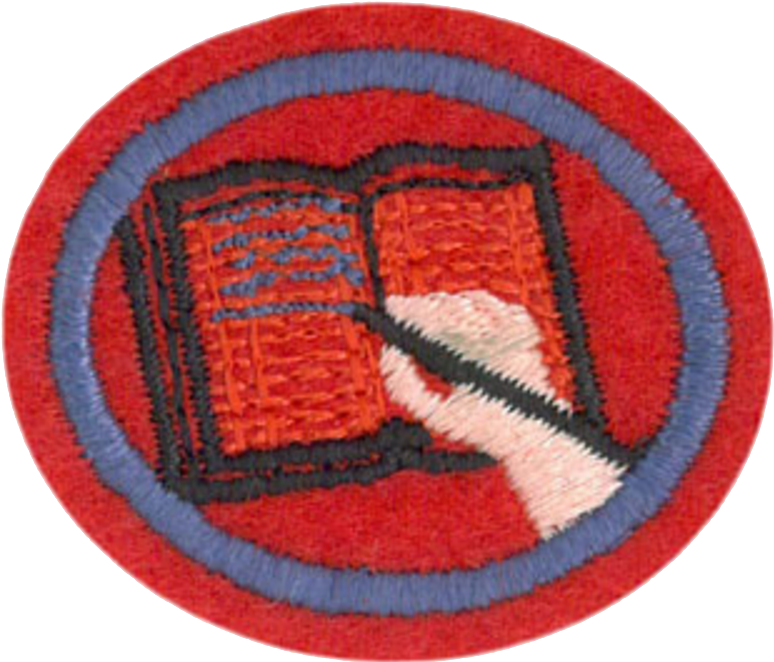Difference between revisions of "AY Honors/Accounting/Answer Key 2"
| (40 intermediate revisions by 8 users not shown) | |||
| Line 1: | Line 1: | ||
| − | {{ | + | {{HonorSubpage}} |
| − | + | ||
| − | + | {{#vardefine:reqpage|{{#titleparts:{{PAGENAME}}|2}}/Requirements 2}} | |
| − | + | ||
| − | + | <section begin="Body" /> | |
| − | + | ||
| + | {{ansreq|page={{#var:reqpage}}|num=Prologue|dispreq={{Localize|Prologue}}}} | ||
| + | <noinclude><translate><!--T:17--> | ||
| + | </noinclude> | ||
| + | <!-- Prologue: Complete a high school or college course in accounting OR the following requirements: --> | ||
| + | |||
| + | <!--T:3--> | ||
| + | Completing a course is the best way to really learn accounting. If attending school is not convenient, consider distance education. The requirements below represent some of the main skills you will learn in an accounting course. | ||
| + | |||
| + | <!--T:4--> | ||
| + | If you insist on self study, get a good accounting textbook to read and work out problems in it. | ||
| + | |||
| + | <!--T:18--> | ||
| + | <noinclude></translate></noinclude> | ||
| + | {{CloseReq}} <!-- Prologue --> | ||
| + | {{ansreq|page={{#var:reqpage}}|num=1}} | ||
| + | <noinclude><translate><!--T:19--> | ||
| + | </noinclude> | ||
| + | <!-- 1. Show transactions necessary for acquisition or deposit of assets, and acquisition and disposal of liability. Show transactions necessary to close income and expense accounts at year end. --> | ||
| + | |||
| + | <!--T:6--> | ||
| + | A proper discussion of these requirements fills several chapters in an accounting textbook and is therefore outside the scope of this answer book. | ||
| + | |||
| + | <!--T:20--> | ||
| + | <noinclude></translate></noinclude> | ||
| + | {{CloseReq}} <!-- 1 --> | ||
| + | {{ansreq|page={{#var:reqpage}}|num=2}} | ||
| + | <noinclude><translate><!--T:21--> | ||
| + | </noinclude> | ||
| + | <!-- 2. Be able to correctly classify balance sheet items with short term asset, long term asset, contra asset, short term liability, long term liability, and equity. --> | ||
| + | A proper discussion of these requirements fills several chapters in an accounting textbook and is therefore outside the scope of this answer book. | ||
| + | <noinclude></translate></noinclude> | ||
| + | {{CloseReq}} <!-- 2 --> | ||
| + | {{ansreq|page={{#var:reqpage}}|num=3}} | ||
| + | <noinclude><translate><!--T:22--> | ||
| + | </noinclude> | ||
| + | <!-- 3. Be able to write an income statement from a trial balance. --> | ||
| + | A [[w:Trial balance|'''trial balance''']] is a list of all the General ledger accounts (both revenue and capital) contained in the ledger of a business. This list will contain the name of the nominal ledger account and the value of that nominal ledger account. The value of the nominal ledger will hold either a debit balance value or a credit balance value. The debit balance values will be listed in the debit column of the trial balance and the credit value balance will be listed in the credit column. | ||
| + | |||
| + | <!--T:8--> | ||
| + | An [[w:Income_statement|'''income statement''']] is one of the financial statements of a company and shows the company's revenues and expenses during a particular period. It indicates how the revenues (money received from the sale of products and services before expenses are taken out, also known as the "top line") are transformed into the net income (the result after all revenues and expenses have been accounted for, also known as "net profit" or the "bottom line"). It displays the revenues recognized for a specific period, and the cost and expenses charged against these revenues, including write-offs (e.g., depreciation and amortization of various assets) and taxes. The purpose of the income statement is to show managers and investors whether the company made or lost money during the period being reported. | ||
| + | |||
| + | <!--T:9--> | ||
| + | A proper discussion of these requirements fills several chapters in an accounting textbook and is therefore outside the scope of this answer book. | ||
| + | |||
| + | <!--T:23--> | ||
| + | <noinclude></translate></noinclude> | ||
| + | {{CloseReq}} <!-- 3 --> | ||
| + | {{ansreq|page={{#var:reqpage}}|num=4}} | ||
| + | <noinclude><translate><!--T:24--> | ||
| + | </noinclude> | ||
| + | <!-- 4. Be able to reconcile bank balance to book balance in checking accounts, including deposit in transit, service charge, returned NSF, interest on account, and checks in transit. --> | ||
'''[[W:Bank_reconciliation|Bank reconciliation]]''' is the process of matching and comparing figures from accounting records against those presented on a bank statement. Less any items which have no relation to the bank statement, the balance of the accounting ledger should reconcile (match) to the balance of the bank statement. | '''[[W:Bank_reconciliation|Bank reconciliation]]''' is the process of matching and comparing figures from accounting records against those presented on a bank statement. Less any items which have no relation to the bank statement, the balance of the accounting ledger should reconcile (match) to the balance of the bank statement. | ||
| + | <!--T:11--> | ||
It allows individuals to compare their personal bank account records to the bank's records of the individual's account balance in order to uncover any possible discrepancies. | It allows individuals to compare their personal bank account records to the bank's records of the individual's account balance in order to uncover any possible discrepancies. | ||
| − | ===History=== | + | ===History=== <!--T:12--> |
When ledgers were written manually, regular checks were important to ensure they remained in balance. It was important to have a reliable source against which to check the accounts ledger. | When ledgers were written manually, regular checks were important to ensure they remained in balance. It was important to have a reliable source against which to check the accounts ledger. | ||
| + | <!--T:13--> | ||
The statement of account from a bank would have been hand written by a clerk and checked carefully by the bank manager. The statement can be taken as a reliable source, as banks' primary business is to ensure their ledgers correctly tracked the flow of funds. Hence the bank balance at the end of a given period could be obtained from bank and matched to a bank ledger kept by a company's accountant. | The statement of account from a bank would have been hand written by a clerk and checked carefully by the bank manager. The statement can be taken as a reliable source, as banks' primary business is to ensure their ledgers correctly tracked the flow of funds. Hence the bank balance at the end of a given period could be obtained from bank and matched to a bank ledger kept by a company's accountant. | ||
| − | + | <!--T:25--> | |
| − | + | <noinclude></translate></noinclude> | |
| − | + | {{CloseReq}} <!-- 4 --> | |
| + | <noinclude><translate></noinclude> | ||
| + | ==References== <!--T:14--> | ||
| + | <noinclude></translate></noinclude> | ||
| − | + | [[Category:AY Honors/noindex{{GetLangSuffix}}|{{SUBPAGENAME}}]] | |
| − | + | {{CloseHonorPage}} | |
Latest revision as of 15:07, 9 March 2023
Prologue
Completing a course is the best way to really learn accounting. If attending school is not convenient, consider distance education. The requirements below represent some of the main skills you will learn in an accounting course.
If you insist on self study, get a good accounting textbook to read and work out problems in it.
1
A proper discussion of these requirements fills several chapters in an accounting textbook and is therefore outside the scope of this answer book.
2
A proper discussion of these requirements fills several chapters in an accounting textbook and is therefore outside the scope of this answer book.
3
A trial balance is a list of all the General ledger accounts (both revenue and capital) contained in the ledger of a business. This list will contain the name of the nominal ledger account and the value of that nominal ledger account. The value of the nominal ledger will hold either a debit balance value or a credit balance value. The debit balance values will be listed in the debit column of the trial balance and the credit value balance will be listed in the credit column.
An income statement is one of the financial statements of a company and shows the company's revenues and expenses during a particular period. It indicates how the revenues (money received from the sale of products and services before expenses are taken out, also known as the "top line") are transformed into the net income (the result after all revenues and expenses have been accounted for, also known as "net profit" or the "bottom line"). It displays the revenues recognized for a specific period, and the cost and expenses charged against these revenues, including write-offs (e.g., depreciation and amortization of various assets) and taxes. The purpose of the income statement is to show managers and investors whether the company made or lost money during the period being reported.
A proper discussion of these requirements fills several chapters in an accounting textbook and is therefore outside the scope of this answer book.
4
Bank reconciliation is the process of matching and comparing figures from accounting records against those presented on a bank statement. Less any items which have no relation to the bank statement, the balance of the accounting ledger should reconcile (match) to the balance of the bank statement.
It allows individuals to compare their personal bank account records to the bank's records of the individual's account balance in order to uncover any possible discrepancies.
History
When ledgers were written manually, regular checks were important to ensure they remained in balance. It was important to have a reliable source against which to check the accounts ledger.
The statement of account from a bank would have been hand written by a clerk and checked carefully by the bank manager. The statement can be taken as a reliable source, as banks' primary business is to ensure their ledgers correctly tracked the flow of funds. Hence the bank balance at the end of a given period could be obtained from bank and matched to a bank ledger kept by a company's accountant.


